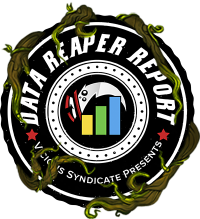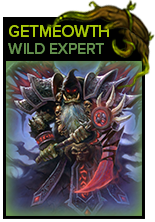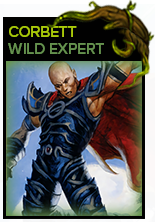
Welcome to the 28th edition of the Wild Data Reaper Report!
The data presented in this article was collected after the ban of Stealer of Souls, following Wailing Caverns’ release.
Contributing to the Data Reaper project through Hearthstone Deck Tracker or Firestone allows us to perform our analyses and to issue the weekly reports, so we want to wholeheartedly thank our contributors. Without the community’s contributions, there would be no project. Contributing data is very easy, so if you enjoy our content and would like to make sure it remains consistent and free – Sign up!
Quick Links
Class/Archetype Distribution | Matchup Winrates | vS Power Rankings | Meta Score | Class Analysis & Decklists | How to Contribute | Credits
Number of Games
| Overall | 195,000 |
| Legend | 29,000 |
| Diamond 4 to 1 | 28,000 |
| Diamond 10 to 5 | 32,000 |
| Platinum | 27,000 |
| Bronze/Silver/Gold | 79,000 |
Class/Archetype Distribution
[TABS_PRO id=49227]
Class Frequency Discussion
Though it is still the most popular class in the format, there has been a big drop-off in Mage’s play rate across ladder compared to our first Barrens report. This is exclusively attributed to the decline of APM Mage, a result of the nerf to Refreshing Spring Water. Secret Mage has maintained its strong presence on ladder, while Reno Mage is also a visible player on the field.
Following the disappearance of Stealer of Souls, Warlock has settled on its familiar archetypes. Reno Warlock is the most popular archetype within the class at all ranks. Darkglare becomes more prevalent at higher levels of play.
The introduction of Primal Dungeoneer did not just make a huge impact on Shaman in Standard. This card has proven to be just as influential in Wild, where Shudderwock Shaman has seen a huge surge in play, and it’s now more popular than Murloc Shaman at most rank brackets. Aggro-Elemental and Galakrond Shaman (which also plays Shudderwock, but functions very differently) have also begun to appear in small numbers.
Priest is relatively unchanged, comprised of the same two familiar archetypes. There is a small uptick in Reno Priest, and a small downtick in Big Priest, but no great developments.
Rogue has attracted more interest, likely a result of the nerfs to Paladin. The class is comprised of many different archetypes, with players experimenting with a variety of packages. The most famous one recently has been Pillager Rogue, running an OTK package of Shark/Scabbs/Pillager, abandoning the Galakrond shell it used to rely on. Shroud of Concealment allows Rogue to tutor its specific minion combo pieces.
Celestial Druid is the most popular archetype available to Malfurion, now adding Lady Anacondra to its toolkit. This deck hasn’t enjoyed much success, though there has been some ongoing refinement, leaning towards a dragon package with Breath of Dreams. The nerf to Gibberling is the only change in last week’s balance changes that should greatly affect a Wild deck going forward, though Token Druid hasn’t been doing much to impact the format anyway (Priest is unlikely to care about Renew/Apotheosis).
Paladin’s popularity has dropped by around 50% compared to the early days of Barrens. Handbuff Paladin got hit with massive nerfs to First Day of School, Crabrider and Hand of A’dal. Tax Paladin was also severely targeted. Odd Paladin is the one deck that remained unaffected and kept its modest presence in the format.
Warrior and Demon Hunter have seen a rise in some of their more experimental archetypes. Pirate Warrior and Odd Demon Hunter remain the classes’ primary choices, but there’s been more interest in DMH & Odd Warrior, as well as Deathrattle Demon Hunter.
Hunter remains a highly fractured class without a single archetype that has managed to gain significant traction, though there has been some hype in certain circles about Even Hunter. The deck was initially touted as a counter to APM Mage, and then a strong answer to Stealer Warlock. But as these decks disappeared, Even Hunter has stuck around.
[TABS_PRO id=49228]

[TABS_PRO id=49229]
vS Meta Score
[TABS_PRO id=49230]
vS Power Rankings Discussion
The Power Ranking table presents some predictable results, but also some very interesting developments. Darkglare Warlock has reclaimed its throne at the #1 spot at legend, following the collapse of Handbuff Paladin. The deck has always performed significantly better at higher levels of play. It is followed by Secret Mage and the permanently underplayed Odd Paladin.
Kingsbane Rogue has surged in power without any new cards. Its success relies on its strong matchups into Warlock, Shaman, and Priest. But Even-Hunter could be the sleeper of the format. It is the most dominant counter to Mage and has great matchups against Warlock as well.
There is quite a variety in the format, with different kinds of decks boasting competitive win rates. Deathrattle Demon Hunter is one of the more surprising performers. This deck aims to upgrade its standard counterpart with the wild-specific synergies available, and we’ve also seen some Reno variants popping about. Considering it is very new and unlikely to be refined, its initial results are promising.
Taking play rate into consideration, Shudderwock Shaman must be the most overrated deck in the format. It is likely to maintain some presence due to being highly attractive to players who aren’t focused on winning, much like Big Priest. But, it doesn’t seem to keep up with the competitive demands of Wild. We will note that Shudderwock may still have a competitive role in Wild, judging by the low sample of Galakrond Shaman games hinting it could be a Meta Breaker!
Class Analysis & Decklists
Demon Hunter | Druid | Hunter | Mage | Paladin | Priest | Rogue | Shaman | Warlock | Warrior
Secret Mage is highly dominant across ladder and will likely be your most common opponent at most ranks.
There’s not much to say about Secret Mage that hasn’t already been discussed. The deck is incredibly well-rounded and is merciless in punishing inefficiency wherever it finds it. It is a relentless destroyer of jank decks. When picking up the deck, feel free to experiment with whatever secret composition suits you and a second copy of Occult Conjurer if inclined. Also remember to enjoy all the new friends you’ll make along the way!
Reno Mage builds are largely centered around Luna’s Pocket Galaxy, although there has been some recent buzz surrounding secret variants. Reno Mage is solid without being outstanding, held back by swarming, aggressive opponents and tends to run into the brick wall of Darkglare Warlock at higher ranks. Reckless Apprentice has looked very powerful in Wildfire versions of Reno-Galaxy Mage. While it’s obviously much more important in those iterations of the deck as an enabler, it may likely be worthwhile in more traditional Reno-Galaxy builds too, given the archetype’s desire for early AOE and a lack of otherwise outstanding options.
We must say, for a deck called APM Mage, it doesn’t seem to require too many actions in most games. Bottom right, concede. The archetype is struggling horribly after the nerf to Refreshing Spring Water, showing sharp declines in both popularity and performance. Already highly polarized, the nerf further damaged its matchups into aggressive decks and left it with very few positives against the field overall.
We should start the Warlock section by mentioning the fiasco that was Stealer of Souls Warlock. Stealer Warlock revolved around the interaction of Stealer of Souls with Plot Twist and immunity cards in Violet Illusionist/Mal’Ganis. The immunity enabled you to play as many cards as time would allow as they end up costing no resources. Stealer Warlock exhibited a ridiculous play rate that became highly warping and difficult to correct, even though the archetype did not impress. When it comes to its win rate, Stealer Warlock did not display a positive win rate anywhere on ladder, but its perceived power and gameplay patterns forced Team 5 to address it, with Stealer of Souls becoming the first-ever card to be banned in Wild.
Darkglare Warlock has returned to display the same kind of dominance it’s exhibited for months before the emergence of Handbuff Paladin, a deck that was so broken that it managed to overshadow Darkglare’s success. It is now quite clearly the best deck in the format at higher levels of play.
Refinement and small tweaks continue to show up within the archetype, with many players utilizing Rain of Fire to fight aggressive decks, with the bonus of preventing Rigged Faire Game from triggering without needing a board. Rain of Fire also allows Warlock to kill off their own Kobold Librarians and Tour Guides against slower decks and fill the Raise Dead pool with quality self-damage triggers.
Reno Warlock is the most popular Warlock archetype at all levels of play, and the archetype’s win rate finally seems to catch up with its play rate. The nerf to Handbuff Paladin, which used to be a very difficult matchup, was extremely helpful. Reno Warlock has also improved its matchups into slower decks with the inclusion of Mutanus, an additional layer of disruption on top of the percentage of decks running Tickatus.
Wailing Caverns has had a massive impact on the Shaman class, with Wailing Vapor and Primal Dungeoneer proving to be very powerful, though the class’ resurgence may have initially been misdirected to the inferior strategy.
Shudderwock Shaman has always been more popular than good. Dungeoneer has certainly helped the archetype find more consistency in its game plan, and it now looks remotely competitive at the bottom of Tier 3 with far better matchups into aggressive decks. However, that’s not enough to justify a real place in the meta. Its finishing capabilities are simply too slow for the format, and it’s generally outclassed by other late-game strategies.
Where Vapor and Dungeoneer could make their biggest mark on the format is in Galakrond Shaman. This deck is faster and more efficient than its combo-focused counterpart, utilizing a strong elemental shell alongside its Galakrond shell. Its effectiveness at contesting aggressive decks early, while still carrying potential late game bombs in Galakrond and Shudderwock make it a worthy contender. Based on its low sample of games, it is likely a Tier 1 performer. Watch out for this one.
Another deck utilizing the new cards effectively is Elemental Shaman. The archetype tends to be aggressive, with a style akin to what we’ve seen in Standard. But the all-in aggro versions haven’t impressed too much, as the deck runs out of steam very quickly. A more balanced approach is likely to be superior, without jamming in tons of Wild-exclusives just for the sake of it. The featured list is a bit speculative, but the potential of the shell is there.
Murloc Shaman remains strong and successful, though it hasn’t found much use out of Wailing Caverns and therefore hasn’t changed. If allowed to snowball the board, it can be extremely explosive.
Priest was going through hell following Wailing Caverns’ release but has since recovered after the ban of Stealer of Souls.
Reno Priest remains a favorite of many players at higher ranks, and it shows a solid, albeit unremarkable win rate. There has been plenty of experimentation with Xyrella builds, but with the recent nerf to Renew, players may begin to give up on that package. Players at top legend will very likely want to include a copy of Wave of Apathy, which is excellent against Darkglare Warlock but quite weak in most other matchups.
Looking across the table, Big Priest is exactly as we left it. It does an admirable job against many aggressive decks and greedy late-game strategies. On the other hand, these positives are completely outweighed by Big Priest’s flaws, which cannot be overcome given the archetype’s limitations in strategy and deckbuilding. Players can opt to include Zilliax, which offers some helpful healing in lieu of Renew, although it will obviously hurt slower matchups. This is a choice players may want to make if they are seeing many Secret Mages, for example.
Since the reversion of Raza the Chained over a year ago, not a single Priest archetype beyond the two has made any significant or lasting impact in Wild. While the class has been strong, if not outright dominant at times, it’s certainly looking for a breath of fresh air from the upcoming expansion.
Rogue is leading a double life. On the surface, the class is a respectable member of Wild society, having success with Kingsbane once again. However, it has a secret habit of utilizing self-destructive jank.
Let’s start with the good. Kingsbane Rogue is back on top! After a brief stint in Tier 3, the deck has managed to recover all the way back to Tier 1, a remarkable feat after losing Nitroboost Poison. Kingsbane Rogue is most thankful for the decline of Paladin, with Shaman offering a much easier opponent. We would implore players to stop adding Zephrys to their Kingsbane decks (as well as other duplicate-heavy lists), a truly alarming phenomenon in the Wild scene which we’ve already seen too much of during the genie’s time in Standard.
Odd Rogue is another viable option for the class. We were able to get a low sample estimate of the deck, placing it in Tier 3. Yoink has become a common inclusion, although card choices are difficult to evaluate given the overall low popularity of the archetype.
Pillager Rogue is one of the worst decks in the game. There is a total imbalance in how weak Pillager Rogue is against the majority of the meta compared to the small victories it takes against a minority. It’s much worse into aggressive decks compared to something like Celestial Druid and it also has a terrible time against all Mage decks, whether they’re slow or fast. This deck is a dumpster fire. Another fine addition to Valeera’s collection, put this in the pile alongside Mill and Thief Rogue.
Aggressive Token Druid decks were already struggling and the nerf to Gibberling could be a death knell. Previously one of the best cards in the mulligan in Embiggen lists, Gibberling being made unplayable limits a lot of the explosive openers that the deck was entirely dependent on.
A silver lining to this news is that slower Token Druid lists have a great fallback plan with Oaken Summons and those versions of the deck may begin to see more exploration.
While various finishers are possible within the shell, Celestial Druid is now mostly made up of Malygos builds, which have started using more dragons and Breath of Dreams. Additionally, Escaped Manasaber is a somewhat novel suggestion which is used by many players at higher ranks, although it hasn’t been picked up widely. The benefit of the card is that it allows you to combo off the same turn you play Celestial Alignment. Whether it’s better than Injured Marauder remains to be seen. A 5/10 taunt is still pretty good.
We could copy-and-paste our comments on Jade Druid from the previous half-dozen reports and we honestly doubt anyone would notice.
Pirate Warrior is still a great option on ladder, particularly at the bottleneck to legend. The most popular lists have remained the same since day 1 of the expansion with players seeing little reason to deviate. Interestingly, it does appear that Pirate Warrior has begun to lose ground against Secret Mage, which has been one of the deck’s largest selling points for some time. This can likely be attributed to Oasis Ally, which has become a more popular inclusion over time. We’ll have to see whether this trend continues moving forward.
The slower Warrior decks are unable to claim nearly the same level of success. For the first time, Dead Man’s Hand Warrior has been able to carve out a large enough portion of the meta to make it into our power rankings and the result isn’t amazing. DMH Warrior finds itself in Tier 4, with few positive matchups in the field and some horrific weaknesses. The deck is certainly passable against board flooding, but it’s a mixed bag against OTK lists and is deplorable against greed. While the frenzy package using Overlord Saurfang has bolstered interest in the archetype, it’s still quite far away from where it wants to be.
Odd Warrior is a better option against most aggro, although it is worse off into combo-based lists and has the same struggles against greed. Mutanus has settled as a core inclusion since it is one of the only disruption tools available to the deck.
You’re not going to believe this. Odd Paladin is very strong and underplayed. It’s okay, we’re bored of saying this every report as well, so we’ll keep it brief.
Although Lord Barov doesn’t look amazing in the deck, it is nonetheless an understandable inclusion in response to Darkglare Warlocks at top legend. Both Divine Favor and Blessing of Authority are passable holy spells, although Odd Paladin players should certainly be keeping an eye out on the revealed cards for a clear upgrade.
Tax Paladin has declined in win rate since our last report. Players have almost entirely made the transition to Rally lists, but whether this is even an upgrade or not isn’t particularly clear. Far Watch Posts have been cut by most players, but given their resurgence in Standard, we would suggest players at least re-visit their potential inclusion. This is an archetype that is still feeling the effects of the many nerfs it has faced, and refinement has been sluggish as interest waned.
Written off entirely by much of the player base, Handbuff Paladin is still quite solid. It’s lost the clear edge it previously had against aggressive decks but remains well-rounded. There have already been some enticing new options for Handbuff Paladin among the revealed cards for the upcoming expansion, so it wouldn’t be a surprise at all to see Handbuff Paladin back on top very soon.
Odd Demon Hunter is performing well right now, which may come as a surprise to many.
The deck certainly benefits from players running the “wrong” decks. Of course, we’re not just talking about the bad decks carrying inflated play rates. We’re also talking about the decks people aren’t using. Odd Paladin, Pirate Warrior, and Kingsbane Rogue are all among the most underplayed decks in the format, none of which are fun matchups for Odd Demon Hunter. However, given the play rate patterns, these types of decks exhibit time and time again, it’s unlikely this changes any time soon, which is simply good news for Illidan.
Now to the big news. Demon Hunter has another viable Wild deck?! Players in tune with Standard will already be very familiar with Deathrattle Demon Hunter. It turns out the archetype looks good in Wild as well. This includes a percentage of Reno versions, but most games come from non-Reno builds. Deathrattle Demon Hunter has strong matchups into Reno decks, due to layers of threats and Bad Luck Albatross. Against aggression, it’s a mixed bag. The stickiness helps in some matchups, but it can allow boards to get out of control and snowball due to its slow early game.
Deathrattle Demon Hunter hasn’t been given very much attention thus far, so featuring a specific list that we feel confident in is difficult. However, regardless of the specific 30 cards shown below, the big takeaway that players should have is that this archetype is worth trying.
Hunter can claim with confidence that it has one of the best decks in Wild. Greetings, traveler.
Even Hunter has an argument to be called the best counter to Darkglare Warlock and Secret Mage on ladder. That is an excellent position to be in, and it makes it very clear why the deck is finding success. It goes beyond that too, as the deck is also punishing against ‘fun and interactive’ combo lists.
It does have flaws of course. Decks with plenty of removal and healing such as Reno Priest are a challenge. More than that, snowballing tribal aggro decks are unbearable for Even Hunter, due to its inability to remove threats in the early game. We should emphasize that these weaknesses don’t nearly offset all the positives it carries. Its matchups spread is close to a crossover of pre-nerf Tax Paladin and Secret Mage, with all the ups and downs that brings with it.
Beast Hunter and Reno Hunter aren’t doing quite as well, to put it mildly. One step at a time, of course.
Preparing our weekly article requires a significant amount of time and effort from many individuals. We would like to wholeheartedly thank our current Patreons, whose generous donations help us fund computing and server costs.
vS Gold is a new membership plan aimed to support our efforts towards improving our content and data analysis while receiving some bonuses and extra features.
Contributors
Here are all the people that participated in bringing you this edition of the [Wild] vS Data Reaper Report:






















Thank! very much